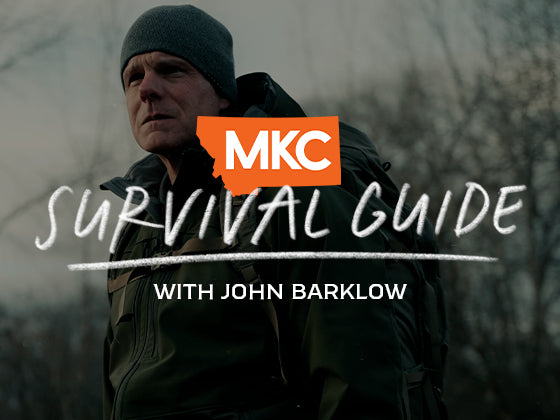Ticks aren’t just nuisances. These tiny parasites carry diseases that can change your life, from Lyme disease to Rocky Mountain spotted fever to alpha-gal syndrome, which makes you allergic to red meat.
That’s why it’s important to learn how to prevent ticks while hiking. Today, I’m sharing proven methods that prevent tick bites before they leave you suffering.
How to Prevent Tick Bites While Hiking With Treated Clothing
Wearing factory-treated permethrin clothing is the most effective way to protect yourself from ticks while hiking. This treatment repels ticks before they reach your skin, and it works against mosquitoes and black flies, too.
I wear permethrin-treated clothing when I hunt black bears and turkeys in the spring. I know firsthand that factory treatment at the garment level beats aftermarket sprays for lasting protection.
Spring seasons require extra vigilance, but if you’re back east, you need protection all summer long. Treated tops and pants are your first line of defense against tick attachment.
How to Protect Yourself From Ticks While Hiking With Aftermarket Treatments
When factory-treated clothing isn’t available, aftermarket permethrin or insect shield sprays can also protect you from ticks while hiking. You can treat boots, socks, hats, and accessories that don’t come with factory treatment.
Modern gear has DWR (durable water repellent) treatment that makes water bead up and run off. When you spray permethrin on DWR-treated fabric, the protection won’t be as effective as factory treatment.
The bottle might claim the treatment lasts up to six washes, but you’ll want to reapply the spray to your boots and socks before each outing. Retreat the waistband and cuffs of your pants, as that’s where ticks like to crawl upward.
Imperfect treatment beats no treatment at all.
Important Inspection Points After Being Outdoors
After your outdoor adventure, check all the areas on your body where ticks like to attach themselves. Understanding how to prevent tick bites while hiking includes knowing exactly where to look:
- Your ankles, where ticks get up around your boots
- Your waist area
- Your groin
- Your armpits
- Your hair
As soon as you spot a tick on you or know your buddy has a tick, you can’t help but be paranoid. You’ll itch yourself the rest of the day.
How to Properly Remove a Tick While Hiking
I learned about tick removal the hard way.
I once spotted a large tick embedded halfway into my calf. It freaked me out, so I grabbed a lighter to burn it off. Bad idea. I burned myself badly, and the tick stayed attached.
Don’t try to burn the tick off you, and don’t apply nail polish to try to suffocate the tick. Knowing how to protect yourself from ticks while hiking includes understanding what removal methods actually work.
If you find a tick on you and can brush it off with your hand, do so immediately. If the tick is already inside you and burrowing deeper, take a pair of tweezers from your medical kit and get right at the skin level.
Try not to squeeze and crush the tick; that’ll push more juice inside you. Just grab as close to the tick’s head as possible and pull it out.
Once you’ve removed the tick, clean and treat that bite mark like you would any wound to avoid infection. Cover it up and continue your hunt.
Warning Signs That Require Medical Attention
Understanding how to avoid ticks while hiking means recognizing when you need professional intervention. If you know you’ve been bitten by a tick and you develop the following symptoms, seek medical attention immediately:
- Headache
- Nausea
- Joint aches
- Vomiting
- Any flu-like symptoms
Watch the bite mark, and keep an eye out for that bullseye-shaped rash: that’s a sign of Lyme disease. If the bite starts to look out of the ordinary, get help.

How to Avoid Ticks While Hiking: The Complete Strategy
In summary, here’s how to prevent tick bites while hiking:
- Use clothing treated with permethrin at the factory for reliable protection, and apply aftermarket treatments to untreated gear.
- Inspect yourself thoroughly after each day outdoors, checking all the areas ticks prefer, like the ankles, waist, groin, and armpits.
- If you spot a tick on you, brush it off immediately.
Tick bites are a real health hazard that requires serious attention. One overlooked tick can lead to months of health problems. It’s best to take proper precautions and avoid getting bitten at all.

by John Barklow, a Special Operations Survival Instructor and consultant who has spent decades teaching military personnel and civilians survival techniques in extreme environments.







































